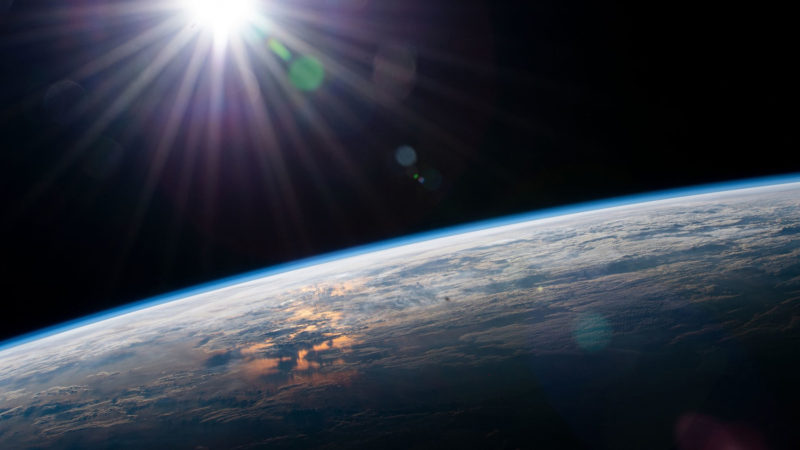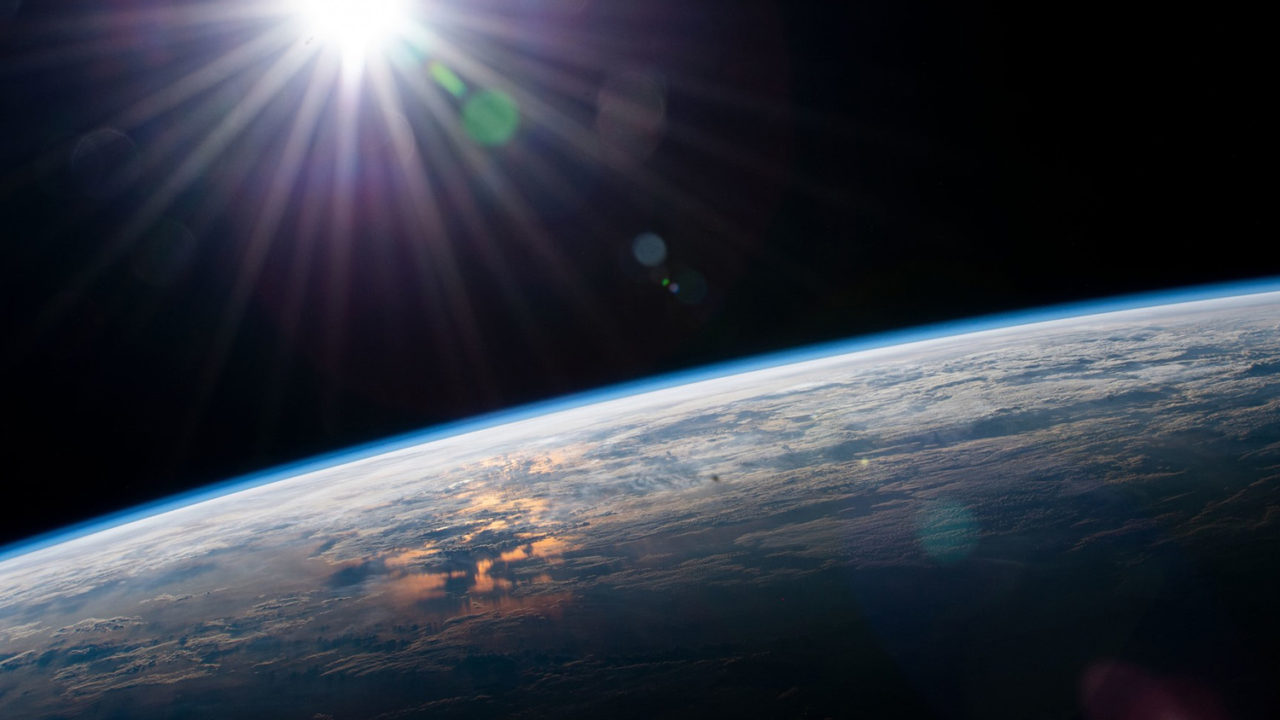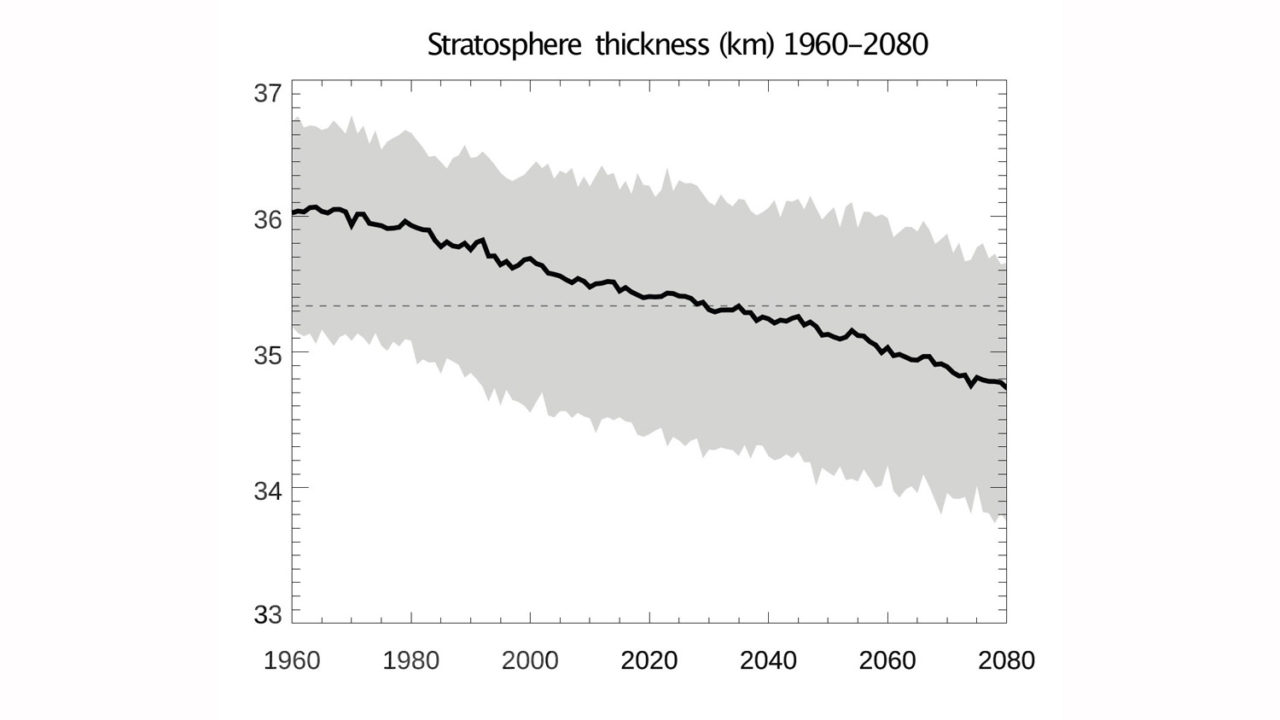The stratosphere, the Earth´s atmospheric layer that extends between 20 and 60 km of altitude and where the ozone layer is, shrink at a rate of more than 100 m per decade since 1980. This is one of the main conclusions of the international study carried out by researchers from five countries, including the physicists from the University of Vigo, Juan Antonio Añel and Laura de la Torre. This phenomena, which has been described for the first time, would be the result of the effect of the greenhouse gases emissions.
The study results have been published in the Environmental Research Letters journal, in the article titled Stratospheric contraction caused by increasing greenhouse gases. Together with the two members of the Ephyslab group (Marine Research Centre-University of Vigo), the work is co-authored by researchers from seven research institutions from the Czech Republic, Germany, USA and Austria. They are Petr Pisoft, Petr Sacha, Lorenzo M. Polvani, Roland Eichinger, Ulrich Foelsche, Petr Huszar, Christoph Jacobi, Jan Karlicky, Ales Kuchar, Jiri Miksovsky, Michal Zak e Harald E. Rieder.
Reduction in 1,3 km by 2080
As it is stated in the article, the increase in the greenhouse gases emissions due to human activity has caused the heating of the troposphere (the atmospheric layer that is contact with the Earth´s surface) and the cooling of the stratosphere (the atmospheric layer between the 20 and 60 km that also includes the ozone layer). These temperature changes have caused in turn changes in the width of these layers. As explained by Juan Antonio Añel: “it is known since the beginning of the 2000 decade that the troposphere is shrinking, an hypothesis partially based, on the one hand, on the reduction of the ozone layer, and, on the other hand, in the effect of the greenhouse gases emissions”.
As this University of Vigo´s physicist comments about the published work “for the first time we have demonstrated this hypothesis, showing than the terrestrial stratosphere shrink at a rate of more than 100 m per decade since 1980 and also that its cause is on the greenhouse gases emissions”. He also adds that in their study “we have discovered that in a highly possible climate change scenario, during the next 60 years (until 2080), the Earth´s stratosphere could lose nearly 4% of its vertical extension (1,3 km) when comparing to 1980”. In the study they also shown that “the cause is not the reduction of the ozone layer, but the greenhouse gases emissions”.
Regarding what happened before the time period analyzed, Juan Antonio Añel adds that “we could hypothesize that this reduction might have happened even before the 1980´s” and therefore “the shrinkage of the stratosphere could be larger than the reported 400 m”. However, according to the researcher from the Orense campus, there are not enough data to verify it.
To carry out the published study, the researchers from the UVigo comment that “they used re-analyzed data from several types of atmospheric measurements (satellites, direct measurements with probes, etc.) and 14 climatic models”. According to them, the re-analyzed data “allowed them to confirm the phenomena for the 1980-2018 period and the climatic models to carry out a projection for the future”
Future impact
Regarding the implications of the described phenomena, Juan Antonio Añel points out that “in addition to the clear alteration of the fragile equilibrium of our planet”, we have to consider the impact that this reduction might have in the satellite trajectories and their measurements, and its potential impact, still pending to be fully understood, on the accuracy of the global positioning systems (such as GPS or Galileo) and on the radio signal transmissions around the planet due to the movement of the atmospheric layers. He also comments that “the width of the stratospheric layer has the potential to become a new indicator of the climate change, based in only a value, as it happens with other commonly used indicators”. Considering the importance of these impacts and the study results, the physicist highlights how “it will be a challenge in the future to obtain good and complete observations of the upper layer of our atmosphere to validate the shrinkage of the stratosphere”
Source: DUVI





